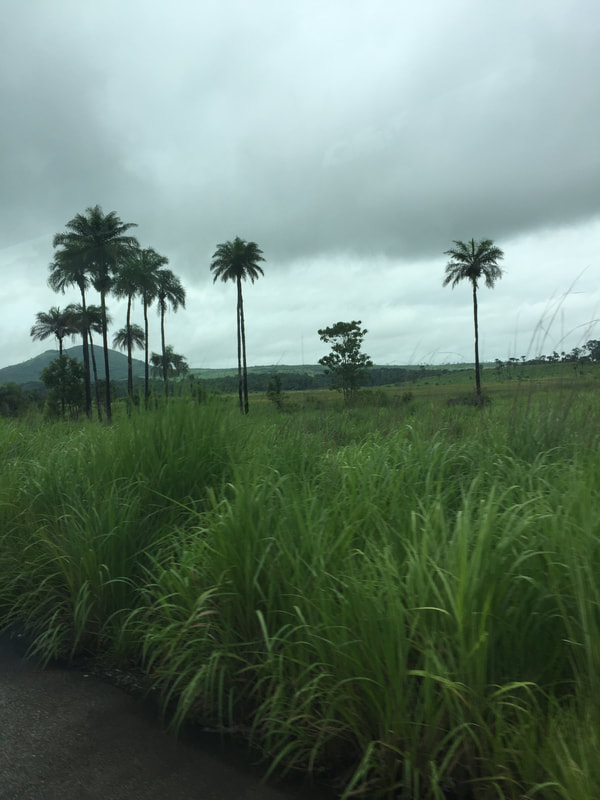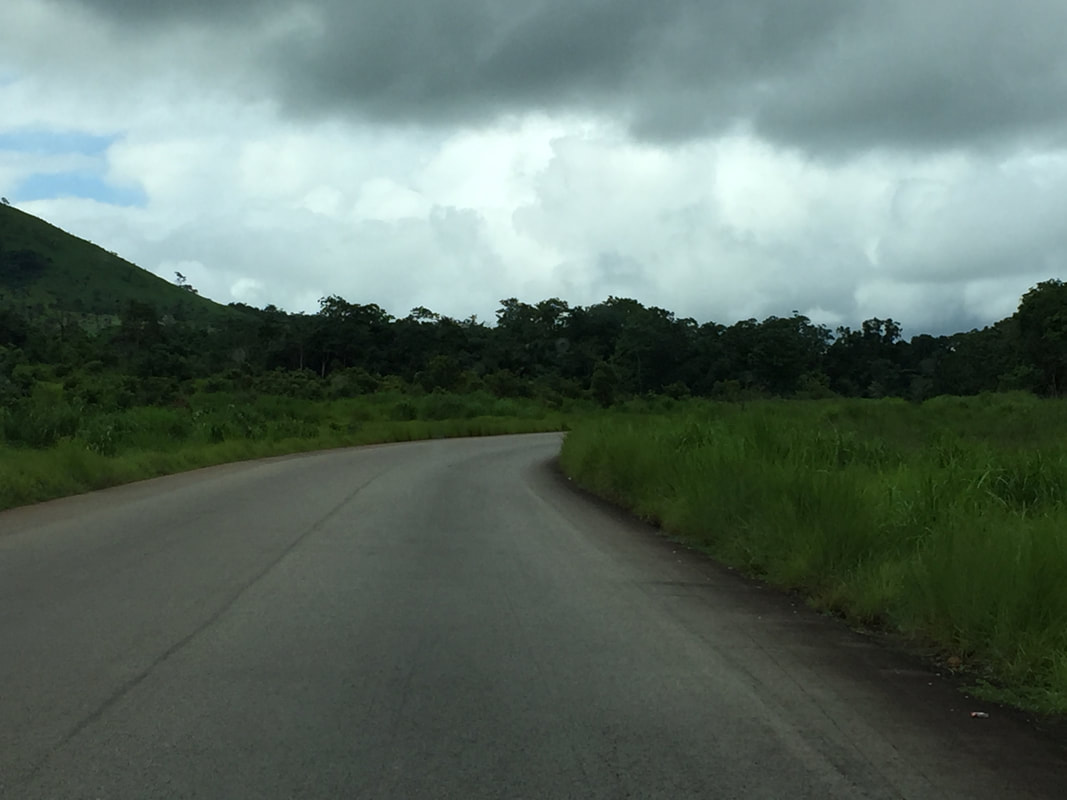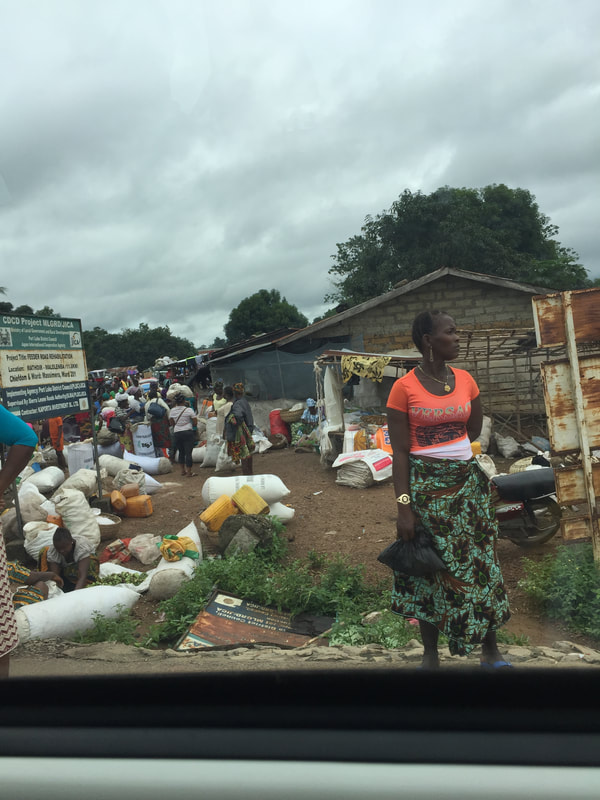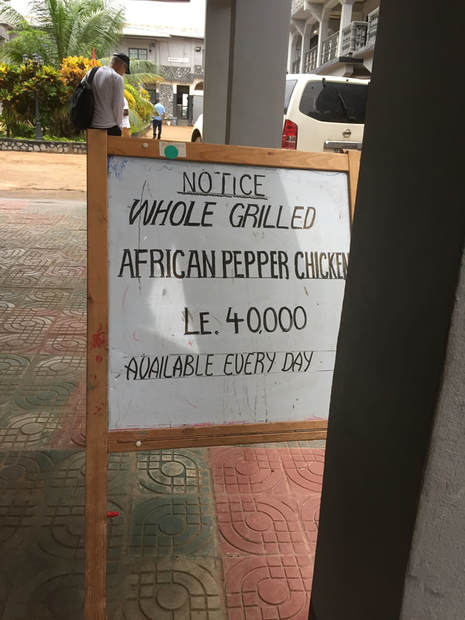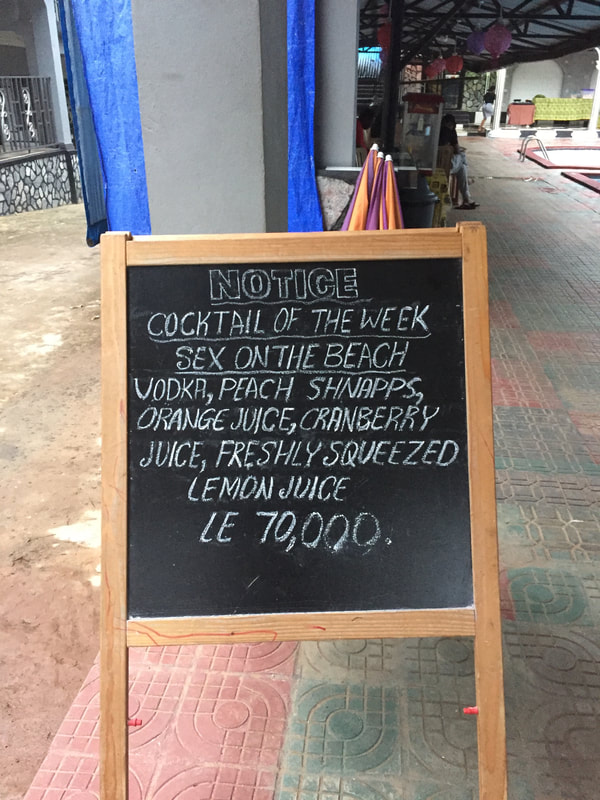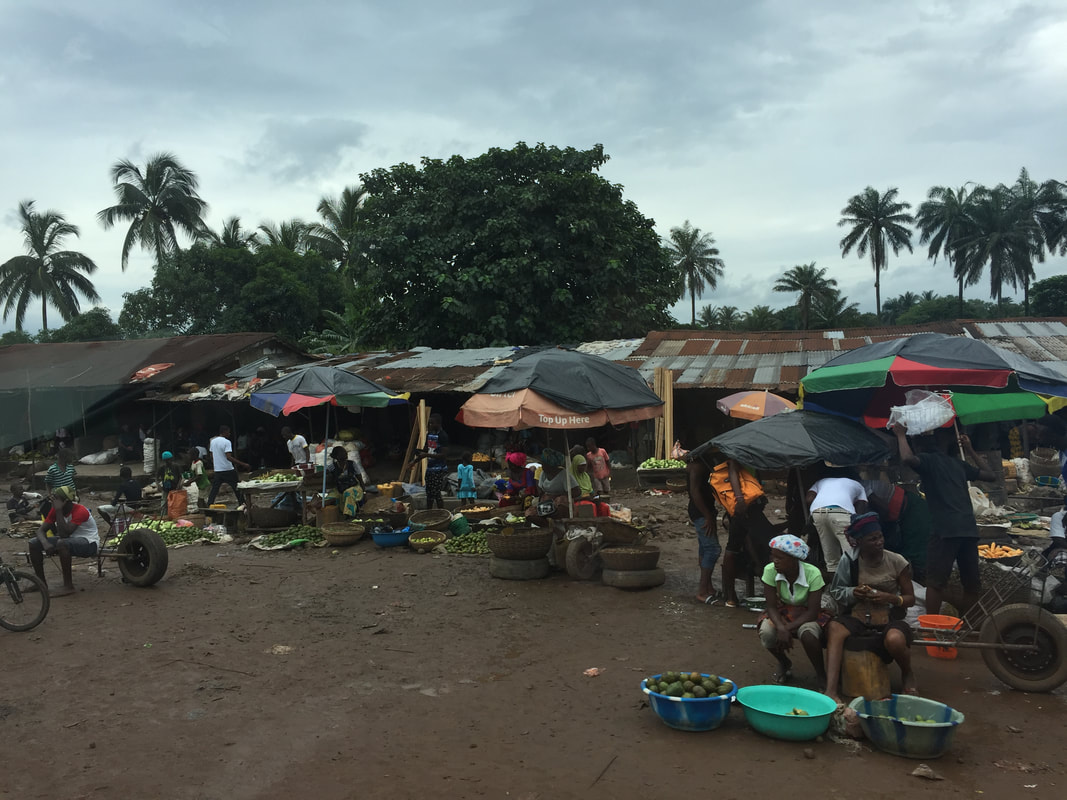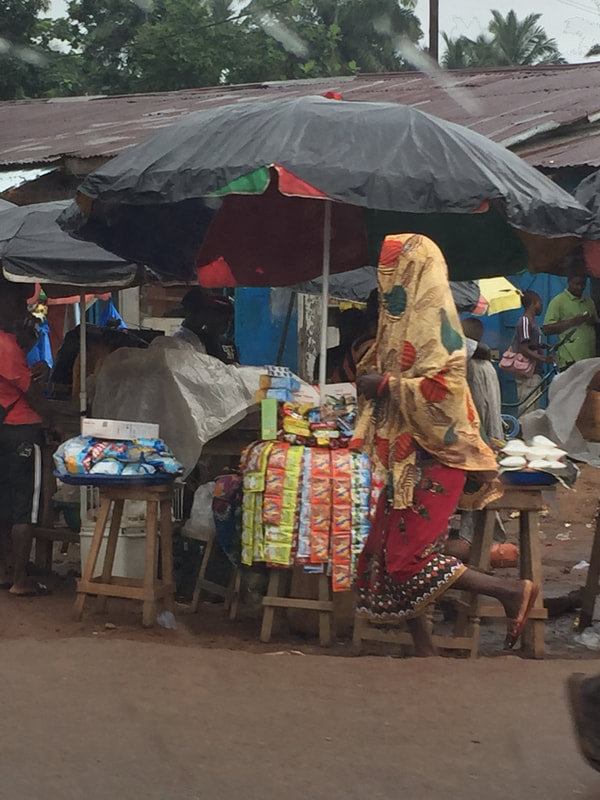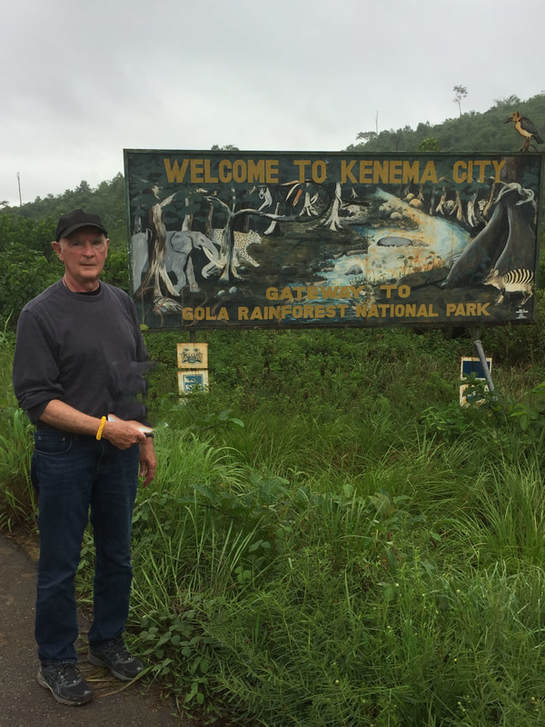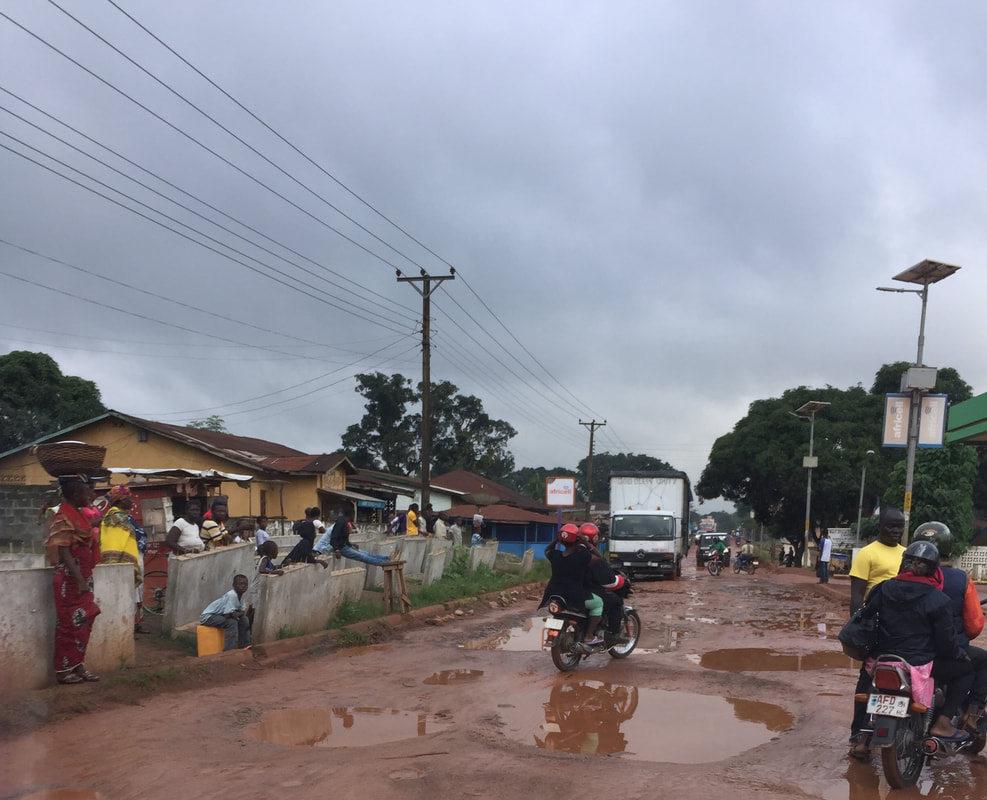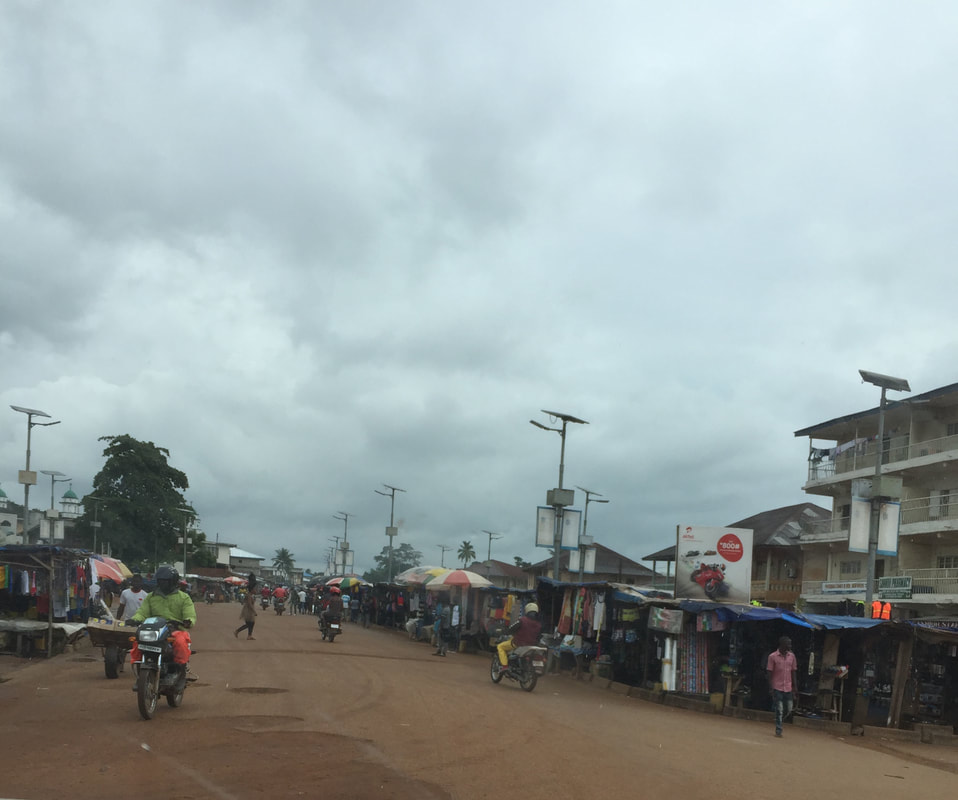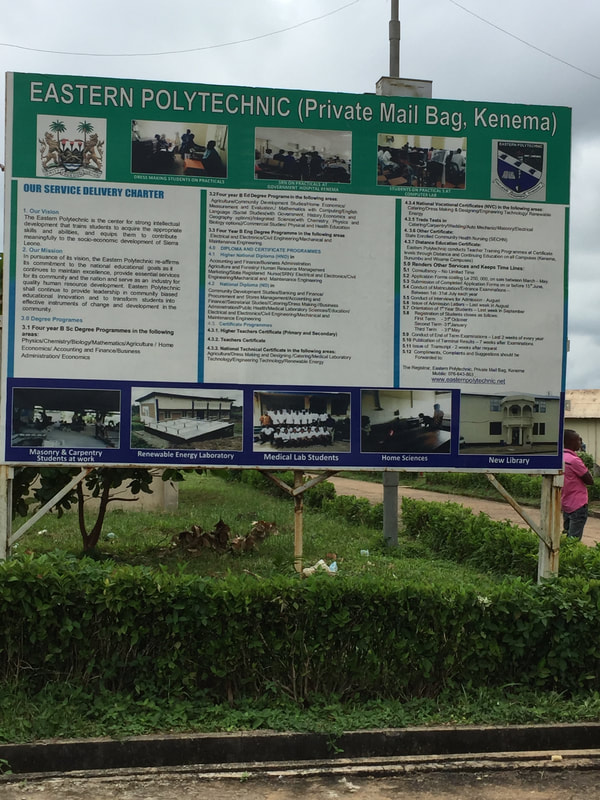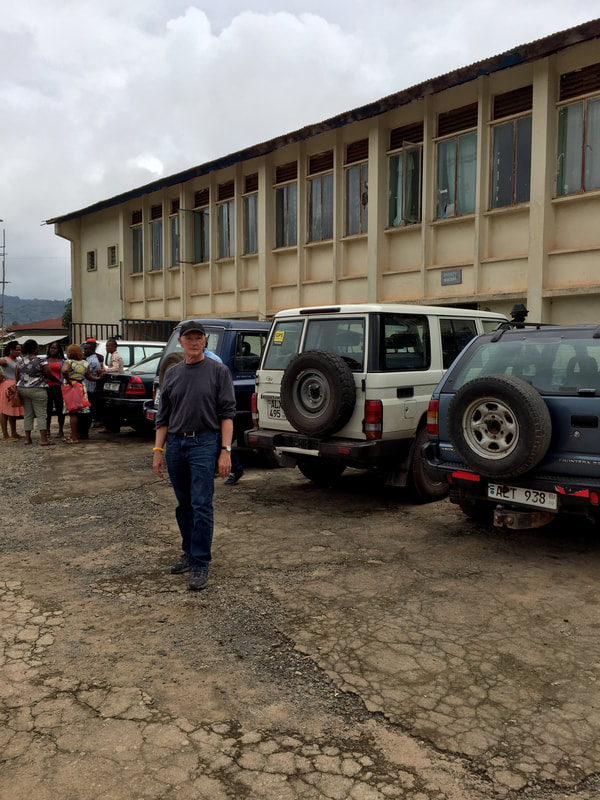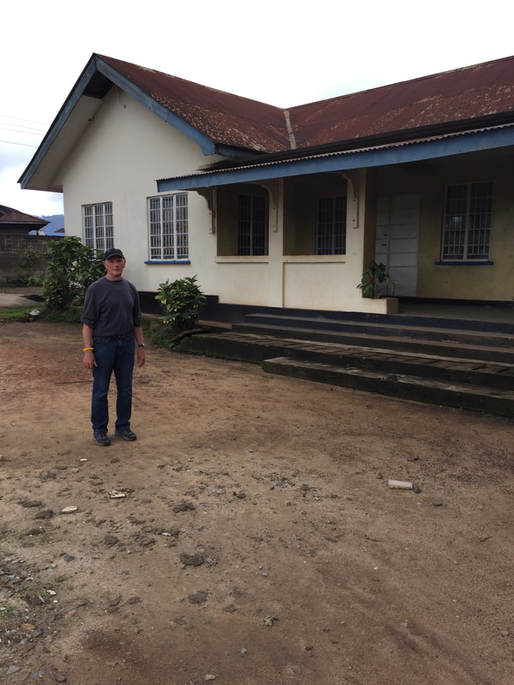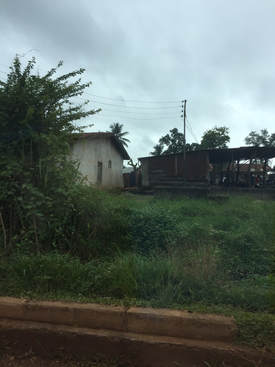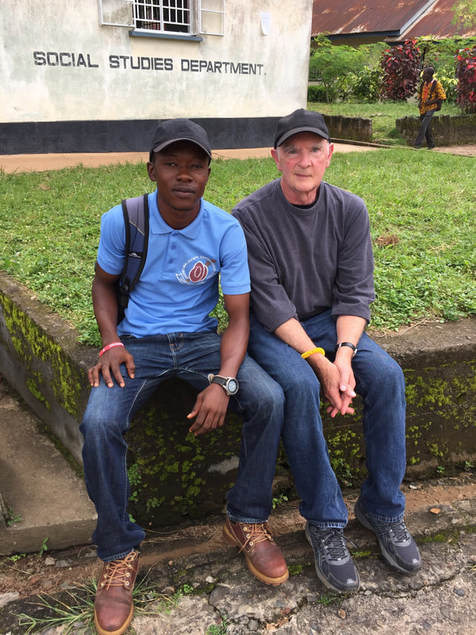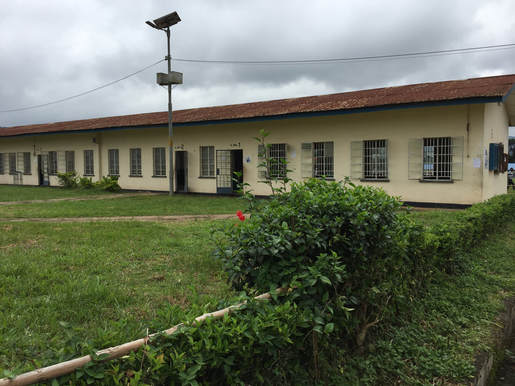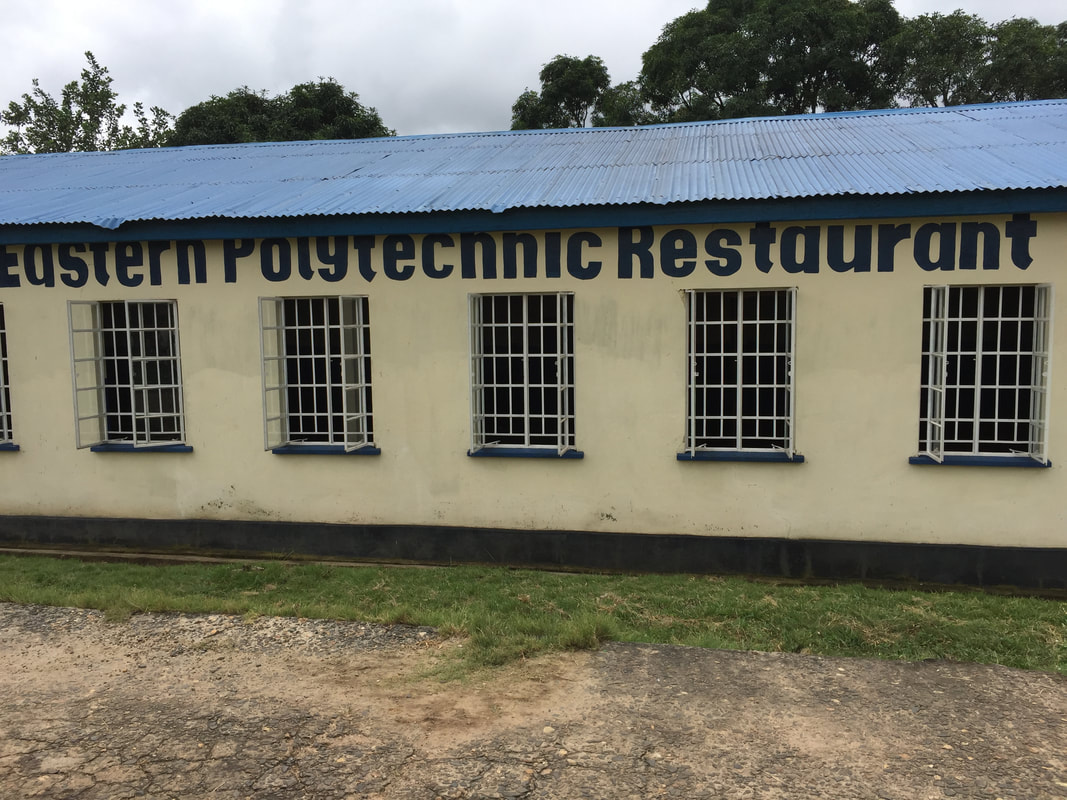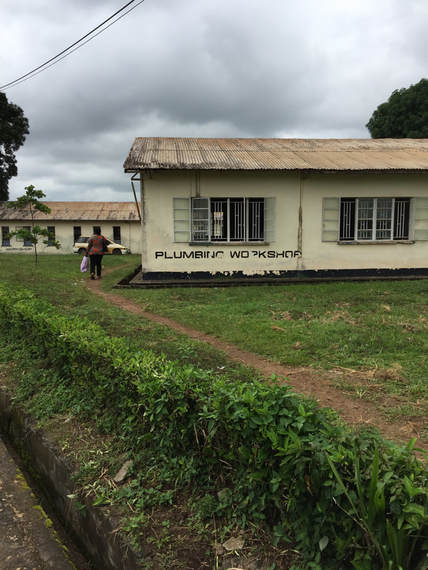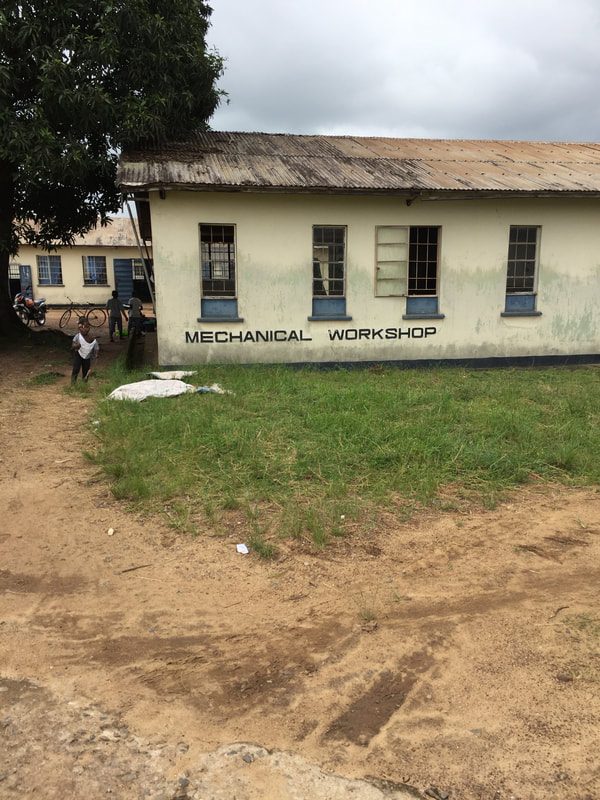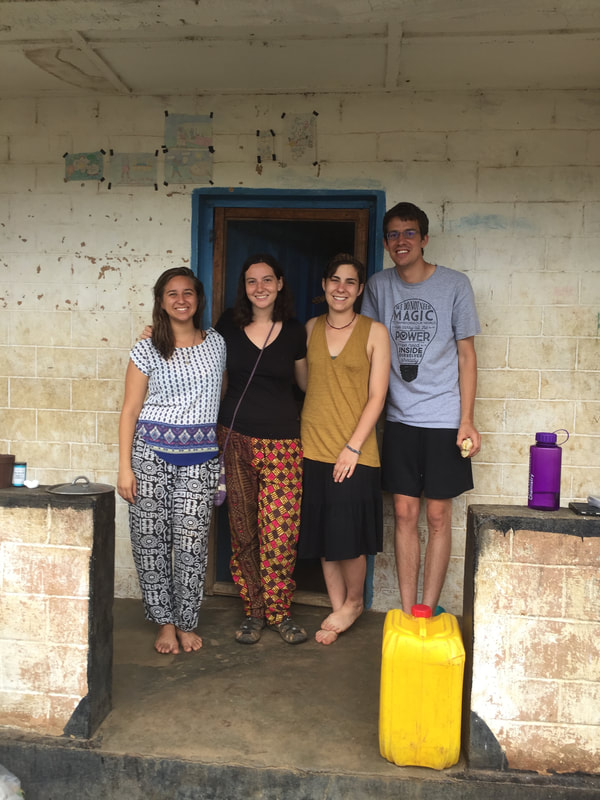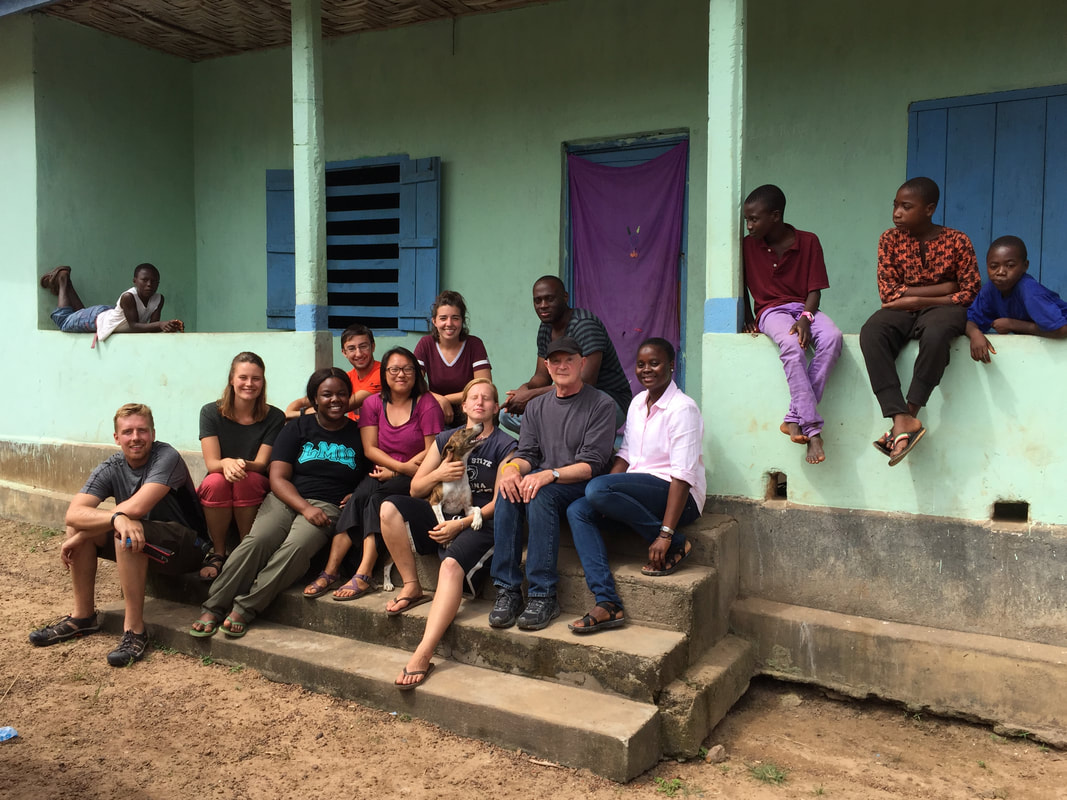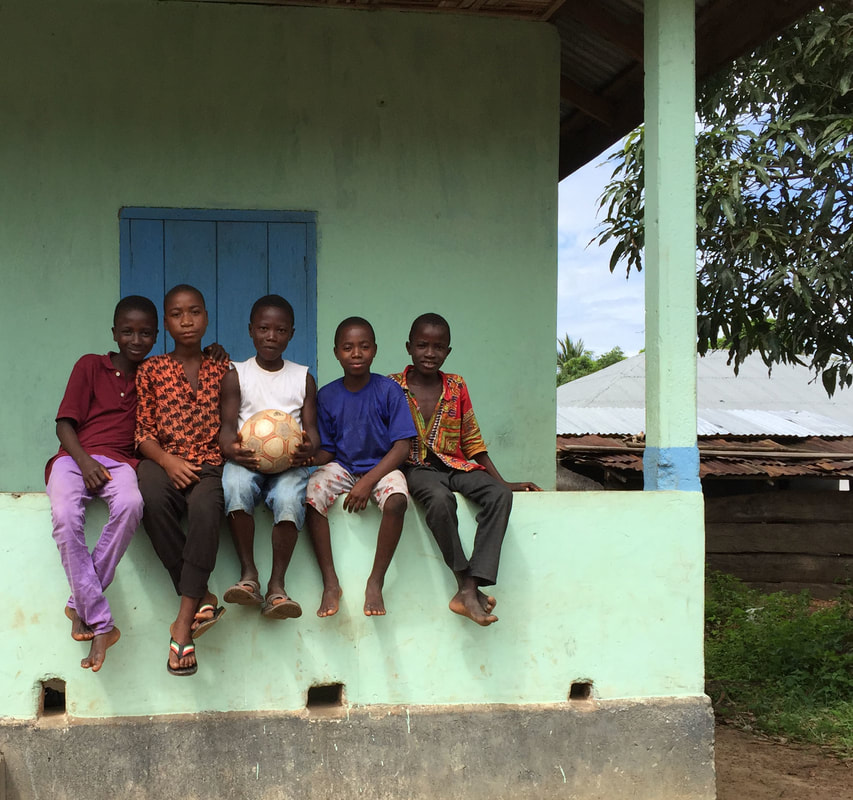From Freetown, I traveled upcountry to the Eastern Province, first to Bo and then to Kenema. The road from Freetown almost to Kenema was well maintained. There were three brand-new toll booths established near Freetown. I understand that the tolls will pay for the roadway and its maintenance. The view from the road was primarily open space: rice fields, palm trees, and forest. Interspersed along the way were many villages, and many, many people walking along the side of the roadway.
The view from the road in many places, has not changed.
It still is a beautiful landscape, lush greenery, palm trees, and hills.
As with any travel means, there's waiting for a ride, and the pain of a broken-down vehicle.
At a hotel in Bo, this was on the day's menu:
At the edge of Bo, the markets start to appear.
On the road from Bo to Kenema, greeted by the Welcome Sign. Kenema has grown from 20,000 in the 1960s to over 140,000 today. What I found surprising is that the paved road ends abruptly just before the town, and the remaining roadway is suddenly treacherous, narrow, and overcrowded since the traffic has to move slowly over the gaps and around stalled and parked vehicles.
In Kenema, on the way to the school where I taught 50 years ago, Combema Road
used to be small dirt track, now it bustles with shops and traffic.
My former school, the Technical Institute Kenema, a secondary school for tradesmen, has been repositioned as the Eastern Polytechnic. It is slated to become a university. The most obvious difference was the concertina wire on a cement block wall that surrounds the campus. Security years ago was non-existent. On the day I visited, the makeup of the student body was evidently co-educational, a very big transformation from the past.
This was the original administration building years ago. It is now used for small
office space and storage. No cars were here in the 60’s, only the school lorry, an army surplus truck.
My first place to live when in Kenema was in half of this house. My roommate was another volunteer who was moved to Sierra Leone from Nigeria, because of the civil war there at that time. The other half of the house we shared with the Sierra Leonean family of a staff member and his six children. It is still used by staff members today.
I was a fortunate Peace Corps volunteer because I had a house with water, electricity and a refrigerator. Many volunteers had mud huts. I was often visited by them on weekends, not to see me, but to get a shower.
Behind that house was the living space of the cook who prepared the same meals for all ten of us. He kept his goat tethered outside his door. On one memorable day a line of fire ants made their way first to his house, then to mine. I was warned not to interfere with their march. It was telling that when the ants approached the house, cockroaches fled. They are lethal insects, if the ant column gets to a person, they will literally eat you to death.
|
Suleman, a current student of engineering, agreed to have his picture taken. He explained that although he was graduating this year after a two-year program, he lamented that his workshop was only occasionally sufficiently inventoried with materials to work with. He had no immediate job prospects, but he was happy to be earning his certificate and was hopeful for his future. The building behind us used to be a student dormitory, now is a classroom. Many students live in the town since there is only limited dormitory space. Suleman, like others I spoke to, were incredulous that someone as old as I had a history with this school. Not many Sierra Leoneans live past fifty. |
The classroom block from years ago still stands and is used. The furniture inside is old, wooden desks and benches. The light fixtures outside are a recent addition.
The school dining room has been renamed a restaurant. It is now twice the size it was. The furniture here, as well, looked like it has survived many years of use. The meals in the time I was here were always rice and chopped leaves. A special occasion would be a tomato sauce. One weekend, when I had been with a student to his home village, I was given a chicken as a parting gift. The next day, that chicken graced the evening meal for the students.
Workshops, such as the plumbing shop, is in the same location. The building has not been renovated in any way that I could tell. Looking through the windows, I could not see much equipment. There were neither students nor instructors to ask for more information.
The mechanical workshop, where Suleman practiced his craft, was also a bare-bones classroom. The building has suffered physical deterioration over the years.
In addition to these older buildings, there were three new ones, for nursing, for computers, and for the administration.
I was glad to see the campus put to use to serve the educational needs of students. In the past, there had been a severe shortage of supplies for the workshops. It’s not clear that this has changed.
On the day I visited, there was a ceremony in progress on the large grassy area in the background of this picture. The foreground is of a traditional “Devil” and his accomplices, who perform a dance routine and then ask for a donation. “Devils” dressed in the raffia costume were a common sight during any large gathering. I was thrilled to witness this again.
In a small village outside Kenema lives a Peace Corps Volunteer who teaches in the village school. She was hosting three new “trainees” who were experiencing their first week in the country. All four were excited to be here. The host’s house was a small two room house with this porch. No water, power, or bathroom. She cooked for herself on a small propane powered cylinder-stove.
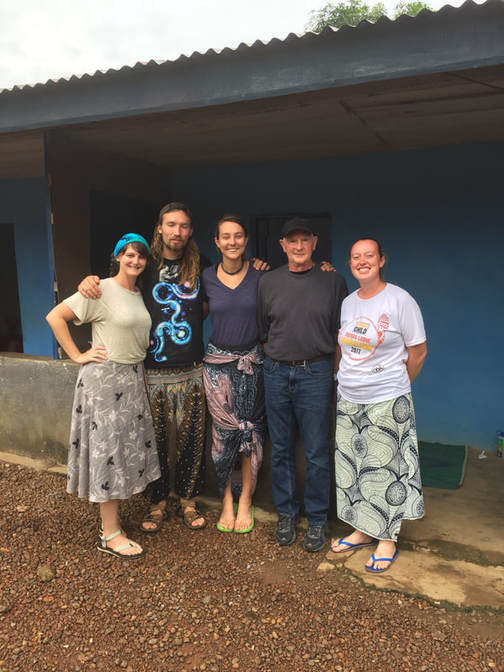
In another small village near Kenema live two volunteer teachers, again hosting current trainees. The hosts shared a house, and both teach in the village school. The trainees in all of these pictures didn’t know where in Sierra Leone they would be placed.
In another small village near Kenema live two volunteer teachers, again hosting current trainees. The hosts shared a house, and both teach in the village school. The trainees in all of these pictures didn’t know where in Sierra Leone they would be placed.
In the village, Lago, just outside Kenema lived another threesome of volunteers and several trainees. One of the volunteers worked on health projects in this village, the other two taught in the village school. The dog adopted itself into this group. The Peace Corps Regional Director for the Eastern Province, Kadiatu Turay, is seated next to me. She was especially helpful in arranging my meeting with all the volunteers and trainees.
The neighbors of the local volunteers. They clamored to have their photo taken and I promised to include it in this write-up. They were not shy about their affection for their American teachers, and the teachers welcomed
them into their home.
them into their home.
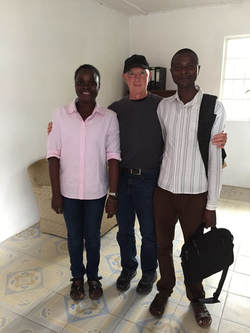
The two Peace Corps staff in Kenema, Kadiatu and Mohammed. It was wonderful to be welcomed back, and rewarding to see the Peace Corps thrive in this town and in nearby villages.
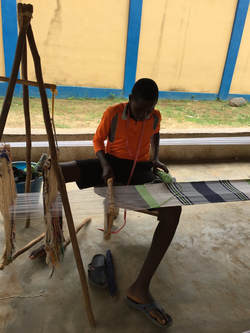
This was the shop of a weaver in Kenema town. I was able to buy a few beautiful examples of his exceptional work.
Proudly powered by Weebly
